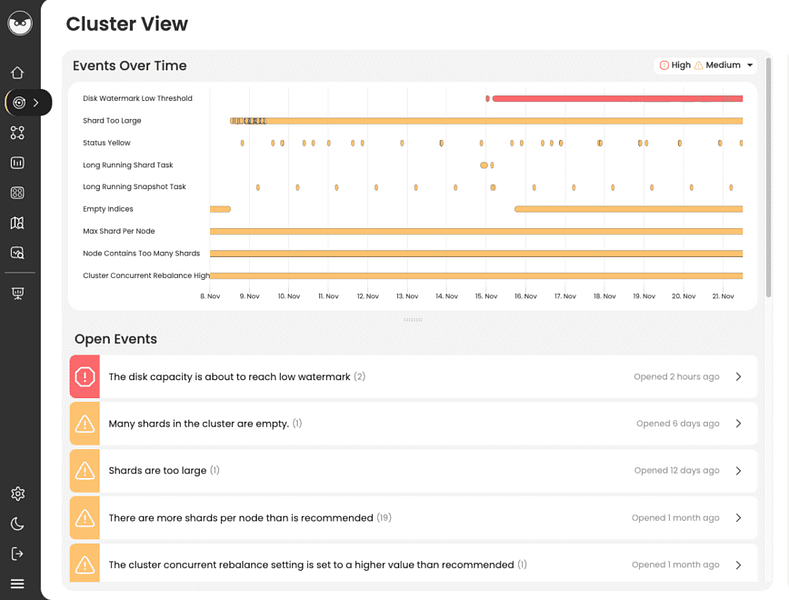Opster Team
Last updated: Oct 27, 2022
| 1 min readIn addition to reading this guide, we recommend you run the Elasticsearch Health Check-Up. It will detect issues and improve your Elasticsearch performance by analyzing your shard sizes, threadpools, memory, snapshots, disk watermarks and more.The Elasticsearch Check-Up is free and requires no installation.
Overview
In Elasticsearch, when using the Bulk API it is possible to perform many write operations in a single API call, which increases the indexing speed. Using the Bulk API is more efficient than sending multiple separate requests. This can be done for the following four actions:
- Index
- Update
- Create
- Delete
Examples
The bulk request below will index a document, delete another document, and update an existing document.
POST _bulk
{ "index" : { "_index" : "myindex", "_id" : "1" } }
{ "field1" : "value" }
{ "delete" : { "_index" : "myindex", "_id" : "2" } }
{ "update" : {"_id" : "1", "_index" : "myindex"} }
{ "doc" : {"field2" : "value5"} }Notes
- Bulk API is useful when you need to index data streams that can be queued up and indexed in batches of hundreds or thousands, such as logs.
- There is no correct number of actions or limits to perform on a single bulk call, but you will need to figure out the optimum number by experimentation, given the cluster size, number of nodes, hardware specs etc.
Related log errors to this ES concept
Find & fix Elasticsearch problems
Opster AutoOps diagnoses & fixes issues in Elasticsearch based on analyzing hundreds of metrics.
Fix Your Cluster IssuesConnect in under 2 minutes

Billy McCarthy
Senior SysAdmin at Backblaze





